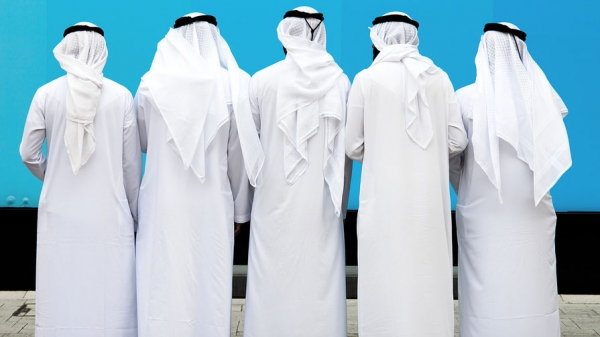Saudi Arabia is ready to continue oil dumping
Aleksey Topalov

Shutterstock
Saudi Arabia is ready to continue price war, and States that American oil projects must either reduce costs or leave the market. Until that happens, Riyadh will continue to play down, increasing the pressure on the oil quotes. In connection with this agreement, Russia, SA and a number of OPEC countries to freeze production, directed on maintenance of the prices, lose any sense.
The oil producers with high costs, should these costs reduce or begin to borrow, otherwise they should be liquidated. This statement was made by the Minister of oil of Saudi Arabia Ali al-Naimi on Tuesday at the IHS CERAWeek conference in Houston.
“It sounds hard, but it’s the most effective way to balance the market”, — quotes al-Naimi Bloomberg.
After last week Saudi Arabia, Russia, Qatar and Venezuela have agreed to freeze oil production at the January level, this was seen as a signal to stop price wars for the oil market. Initially they were initiated by the Saudis, who have repeatedly stated that high-cost projects must be squeezed out of the market. However it concerned not only about American, but Brazilian, canadian and Russian projects.
“The price wars continue and will continue because the Saudis are extremely concerned about U.S. shale oil, says the partner of company Rusenergy Mikhail Krutikhin. — In addition, are actually no real agreements about the freezing of production of no.
The Saudis will fight for market share, dumping including in Europe, where people will compete with Russian oil, said the expert.
<iframe id=”AdFox_iframe_111652″ frameborder=”0″ width=”1″ height=”1″></iframe>
To talk about the freezing yet. Although a number of countries in OPEC and outside the cartel Oman in words supported the initiative, in reality it rests on the mistrust of producers toward each other. So, Iran, which first announced its readiness to support the idea of fixation of production, in the future began to Balk at the fact that during the years of Western sanctions limiting Iranian oil exports, other countries were able to significantly increase production, and now Iran can’t fix, as no time to build up to preganglionic levels.
Iran later called about the freezing of the agreement “unrealistic” and “ridiculous”.
As for American “shales”, the main concern of the Saudis, according to Krutikhin, causes the flexibility of those projects that instantly react to changing market conditions. When the price falls, production in the United States is falling behind her, but once the prices rise as increasing volumes of oil production. This is due to the specifics of the American mining projects. In Russia, for example, it is impossible to freeze the project, and then quickly run it again — it would require too much cost. In particular, after stopping the production from the field will need to conduct underground repairs, which in addition to purely financial resources and requires time — up to three months.
On the other hand, shorting the Saudis have been able to reduce production it is shale oil in America. According to a leading expert of the Union of oil & gas producers of Russia Rustam Tankaev, peak production “oil shale” in the USA was in April of last year (5,56 million barrels per day). By the beginning of 2016 the decline in production of shale oil amounted to 733 thousand barrels per day. However, the decline was gradual due to the fact that the shale producers have insured the risks of lower oil prices in the hedge funds.
“Insurance payments reached $150 million per day, says Tankaev. — However, this year insurance contracts cease its actions that led to the bankruptcy of about 100 shale companies.” However, given that there are more than 2000, while one cannot speak of a precipitous wave of bankruptcies.
“However, if the price of a barrel drops to $20, USA, as, for example, Venezuela and Mexico, will be forced to leave the market — warns Tankaev. — But Russia and middle Eastern producers will be able to survive”.
By the way, who has spearheaded the shale gas revolution mark Papa, the former head of one of the largest independent oil producers EOG Resources, during the IHS CERAWeek said that in the coming months because of the wave of restructuring and insolvency shale company “from Texas to North Dakota” will be destroyed. However, Pope used the term decimated, it could also mean the decimation, the destruction of every tenth.
The main threat to prices, Tankaev considers dumping by Saudi Arabia and Iran. If in November and December of last year the Saudis were given a permanent discount of $0.5 per barrel, in January it was $0,6, and in February — already $1 per barrel. Iran even after the lifting of sanctions has started to sell its oil to Europe at a discount of $1.5 per barrel.
Now the price of a barrel went down again — on the backdrop of Iran’s declarations about the ridiculous idea of freezing oil as well as words of the Saudi Minister al-Naimi, who warned that fixing the level of production does not mean its reduction.
In the last two days the price of a barrel of Brent North sea oil (which is tied to the price of Russian Urals) fell by about 7%.
The five percent decrease was recorded on the London exchange ICE on Tuesday, and another 2.24% Brent fell on Wednesday. 13.25 GMT on the barrel was worth $of 32.55.








